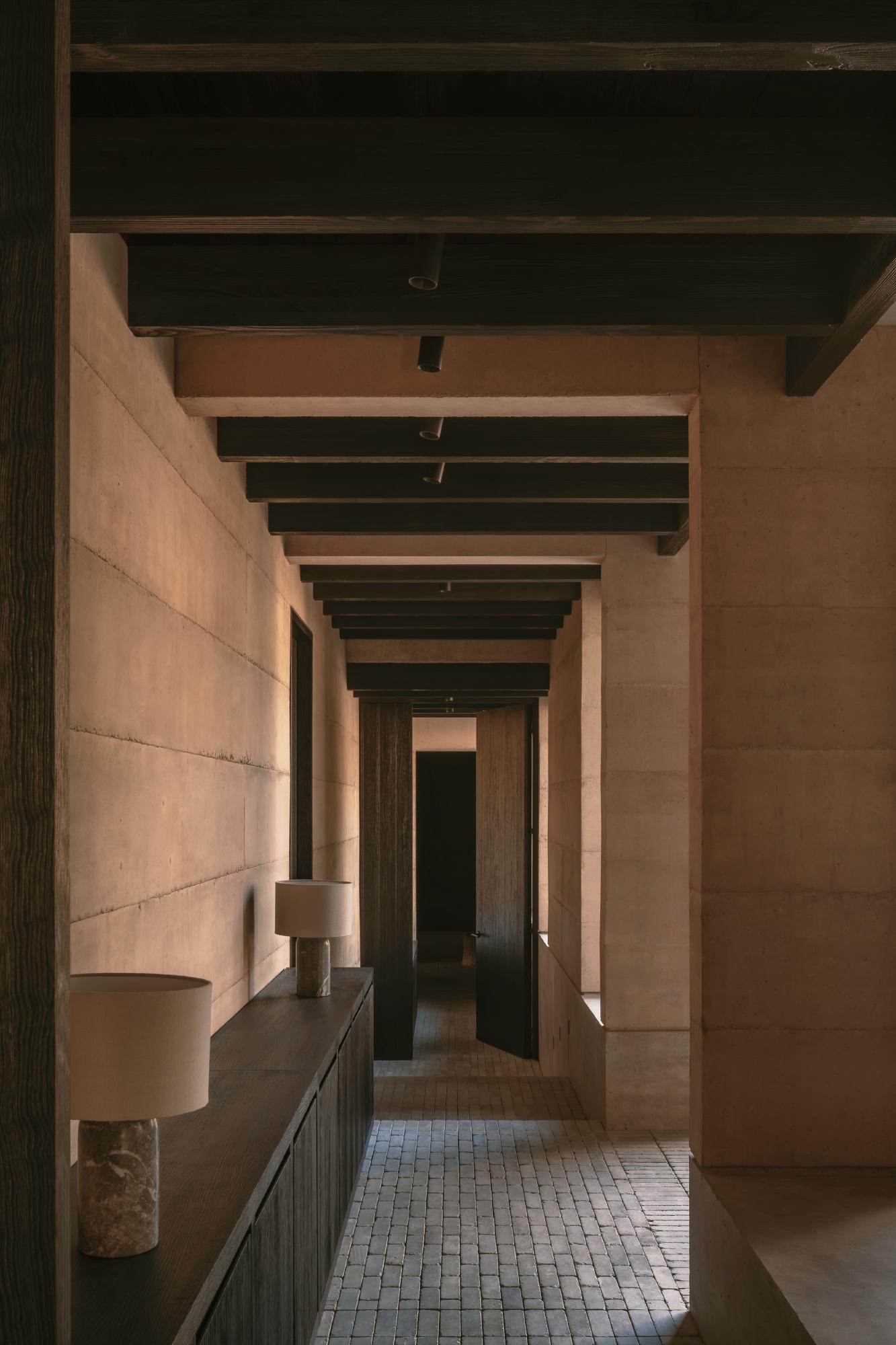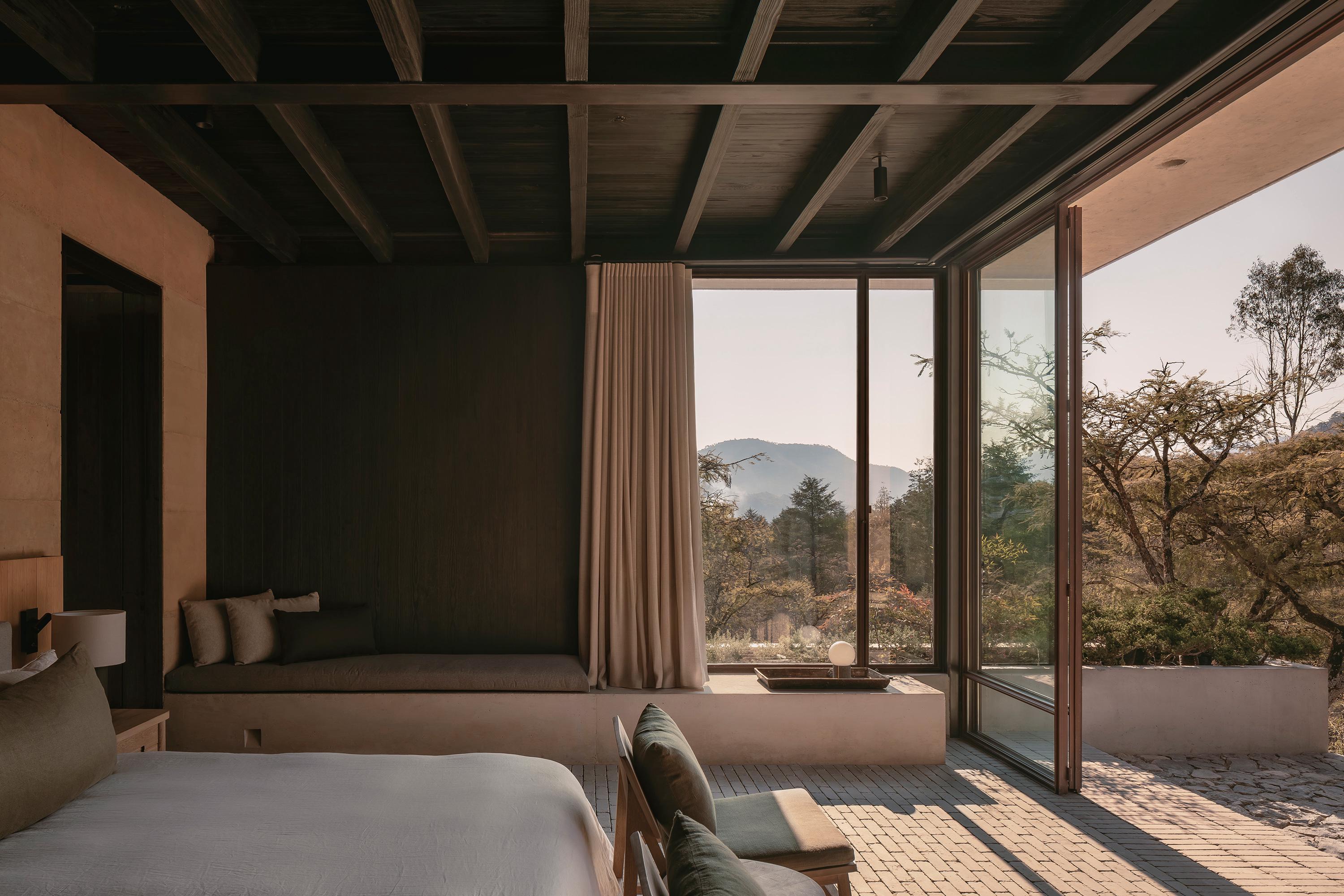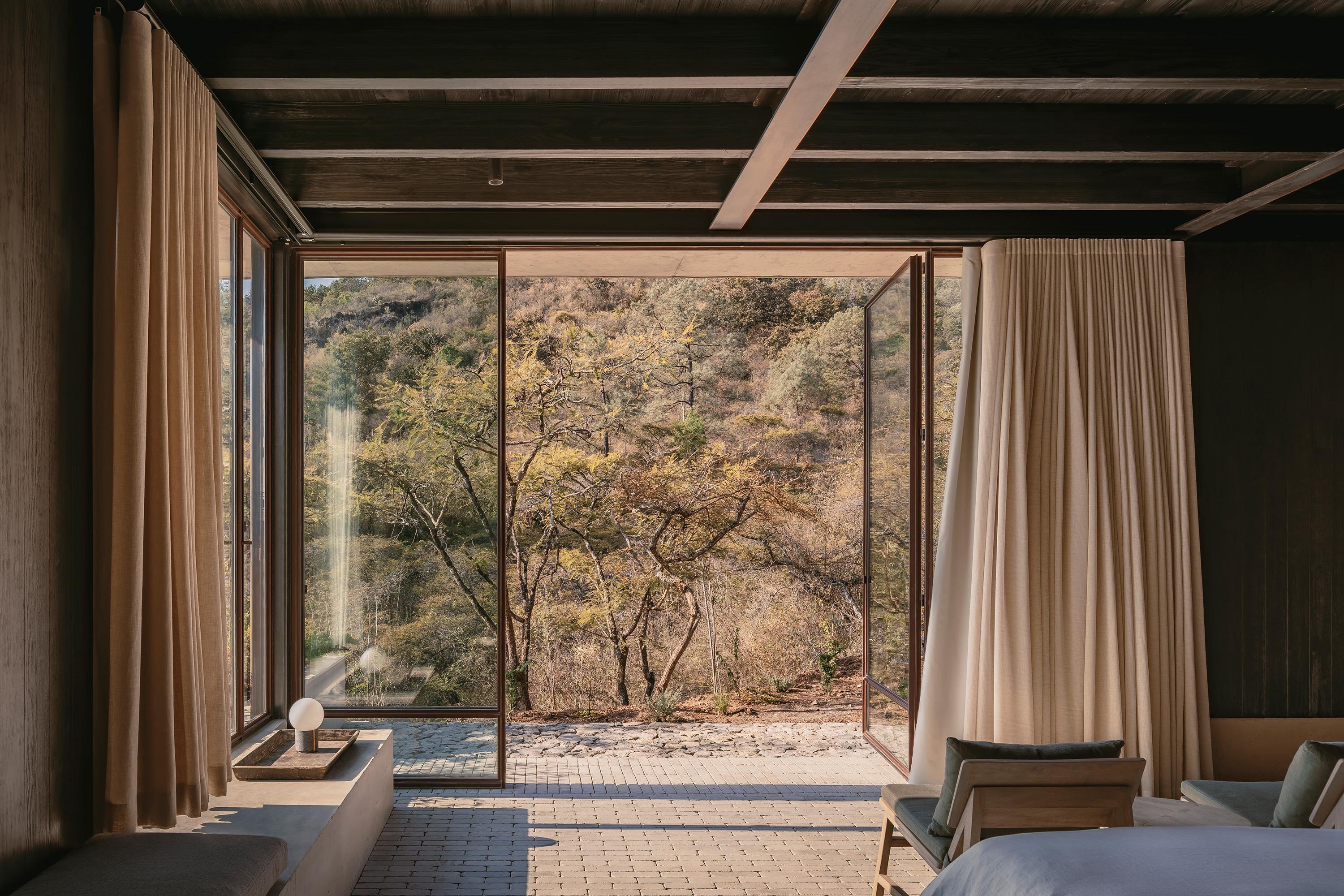Casa el Espino in Valle de Bravo, Mexico by Soler Orozco Arquitectos transforms raw materials into a meditation on time, place, and restraint—an architecture that speaks through silence.
Built on a single level, the house follows the land’s quiet undulations, letting the topography determine its rhythm. From afar, its presence is subtle—more a horizontal gesture than a structure, a canopy resting between mountain and jungle. The architecture resists spectacle; it is deliberate, measured, and deeply attuned to its site.
At the heart of the project lies a gravel courtyard, a serene threshold that organizes the house into two wings. The main volume, marked by a gabled roof and black-stained timber, holds the social spaces—living, dining, kitchen—under one open span. The interior feels almost monastic: earth-toned rammed-earth walls, gray stone floors, and dark metal details create an atmosphere of contained warmth. The muted palette is not aesthetic restraint for its own sake, but a discipline of presence. Nothing shouts, yet everything speaks.
Soler Orozco Arquitectos and DIRECCIÓN have created an interior architecture that merges seamlessly with the structure itself. The furniture—crafted from linen, cotton, wood, and stone—echoes the architectural language. Each element serves rather than decorates, each texture carries the memory of its origin. The palette of natural materials, in its humility, allows light to become the primary ornament. It shifts over the surfaces throughout the day, revealing the house’s nuanced dialogue between shadow and illumination.
As the visitor moves outward, the architecture loosens its formality. The covered terraces, open kitchens, and living areas invite the landscape in, transitioning from introspection to openness. The pool mirrors the muted tones of the walls; the air carries the scent of dry pine and soil. Here, the architecture is not an object but a condition—one of continuity between human life and terrain.
Perhaps the most profound gesture is the espino tree that survived construction, standing between the terrace and the pool. Its slender presence anchors the project, a quiet emblem of endurance and grace. Casa el Espino does not impose on the land; it listens to it. In doing so, it offers a vision of architecture that values silence as much as form, and permanence as much as change.




















